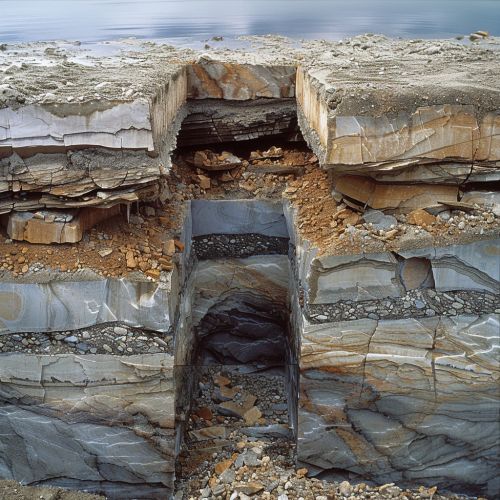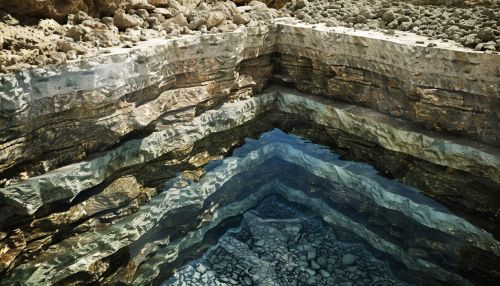Aquifers
Introduction
An aquifer is a body of porous and permeable material capable of storing and transmitting significant amounts of water. It is a critical component of the hydrological cycle, serving as a natural underground reservoir for fresh water. Aquifers are typically composed of sandstone, limestone, or fractured rock formations.


Types of Aquifers
Aquifers are broadly classified into two types: unconfined and confined.
Unconfined Aquifers
Unconfined aquifers, also known as water table or phreatic aquifers, are those in which the water table forms the upper boundary. These aquifers are directly overlain by permeable soil or rock, and their water is free to rise and fall based on the amount of water entering (recharge) or leaving (discharge) the aquifer.
Confined Aquifers
Confined aquifers, also known as artesian or pressure aquifers, are those that are overlain by a relatively impermeable layer of rock or soil (aquitard or aquiclude). The water in these aquifers is under pressure, which can cause it to rise above the level of the aquifer when tapped by a well.
Aquifer Properties
The ability of an aquifer to store and transmit water is determined by its porosity and permeability.
Porosity
Porosity is the measure of the void spaces within a rock or soil. It is expressed as a percentage of the total volume of the rock or soil. High porosity indicates a greater capacity to store water.
Permeability
Permeability is the measure of the ease with which water can flow through the rock or soil. It is determined by the size and interconnectedness of the pore spaces. High permeability indicates a greater ability to transmit water.
Aquifer Recharge and Discharge
Recharge and discharge are two key processes in the water cycle of an aquifer.
Recharge
Recharge is the process by which water enters an aquifer. It primarily occurs through the infiltration of precipitation, but can also occur from surface water bodies like rivers and lakes.
Discharge
Discharge is the process by which water leaves an aquifer. It can occur naturally through springs or artificially through wells. Discharge also occurs where aquifers intersect with lakes, rivers, or the ocean.
Importance of Aquifers
Aquifers play a crucial role in providing drinking water, supporting irrigation, and maintaining ecosystem health. They serve as a critical water source in many parts of the world, particularly in arid and semi-arid regions.
Threats to Aquifers
Aquifers face several threats including overdrafting, pollution, and land subsidence.
Overdrafting
Overdrafting, or over-extraction, occurs when water is pumped out of an aquifer at a faster rate than it can be recharged. This can lead to a drop in the water table, increased pumping costs, and a decrease in the quality of water.
Pollution
Aquifers can be polluted by various sources such as industrial waste, agricultural runoff, and improper disposal of hazardous materials. Once polluted, cleaning an aquifer is a difficult and costly process.
Land Subsidence
Over-extraction of water can also lead to land subsidence, a gradual sinking of the Earth's surface. This can damage infrastructure, increase flood risk, and reduce the storage capacity of the aquifer.
Conservation of Aquifers
Conservation measures for aquifers include sustainable water management practices, pollution control, and legal protection. Public education about the importance of aquifers and the threats they face is also crucial for their conservation.
